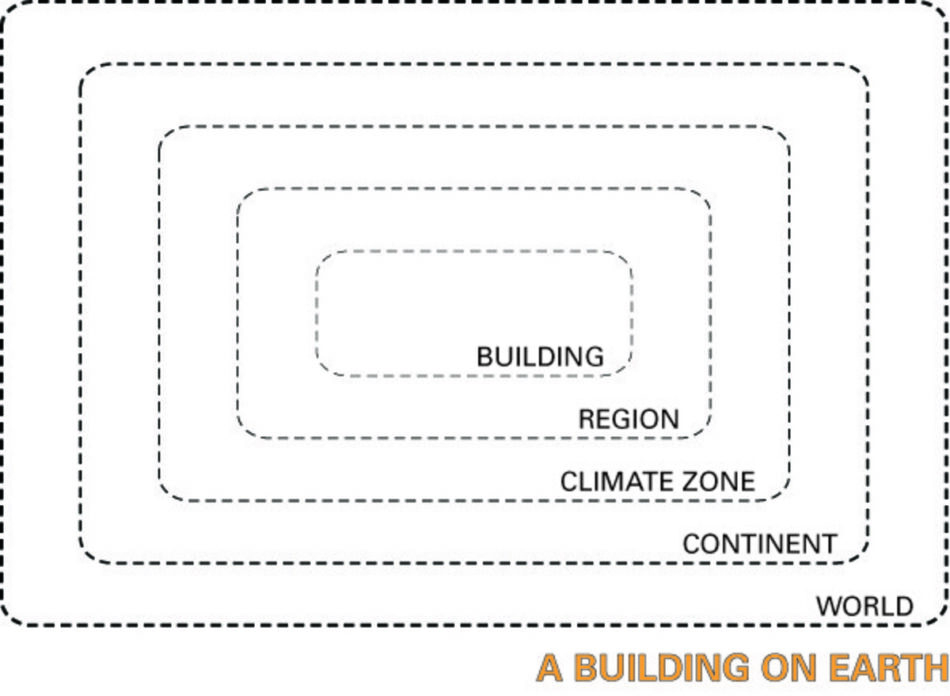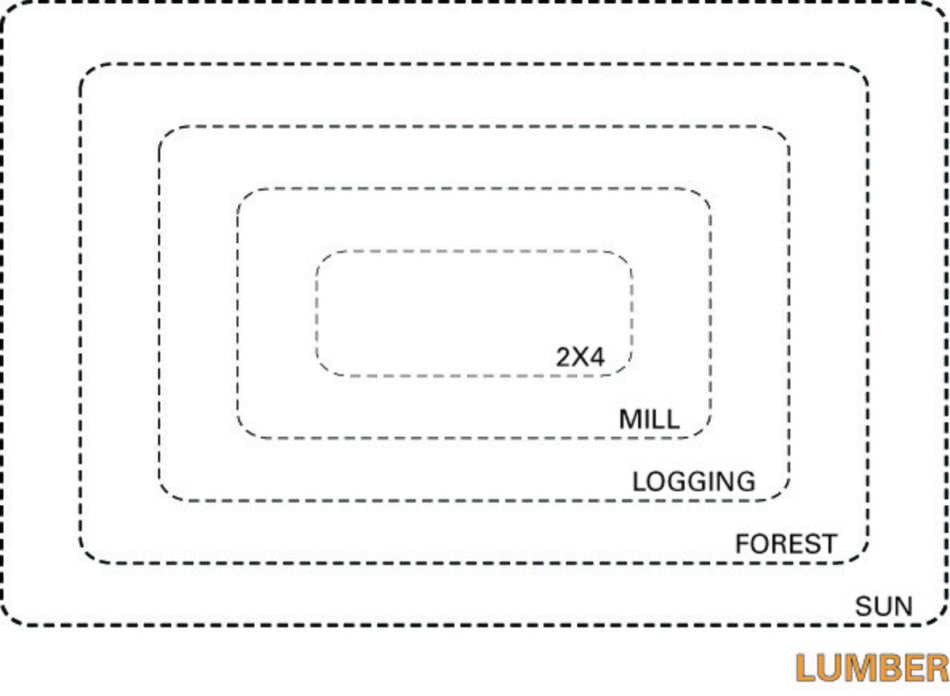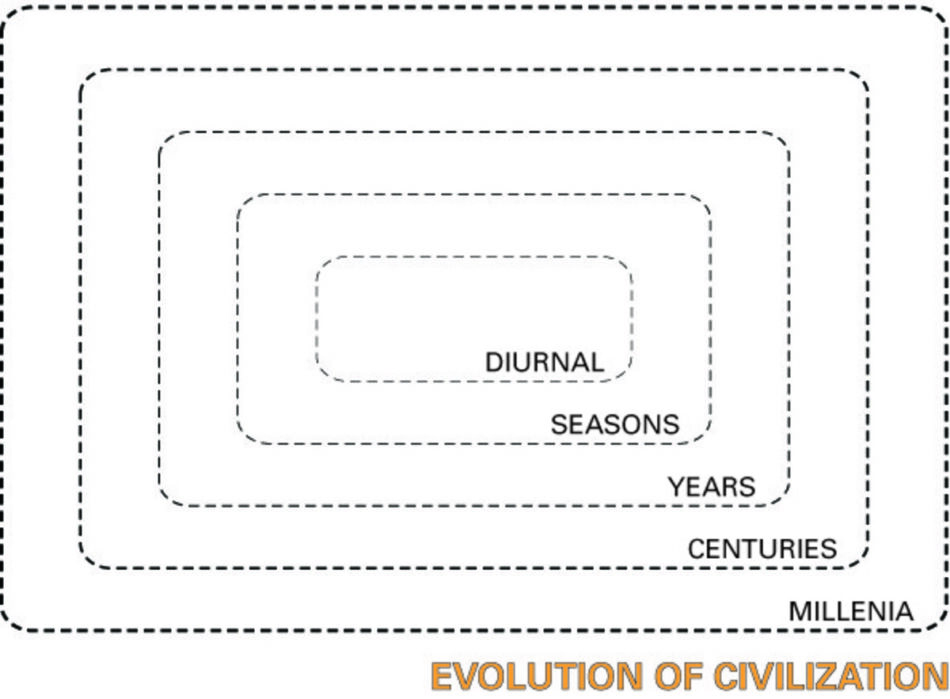Iatrogenic Architecture: Unreliable Narratives of Sustainability
In medical practice, any unintended consequence of a treatment or procedure is referred to as an “iatrogenic effect.” Iatrogenic is Greek in its etymology: iatros + genesis, or “brought forth by a healer.” While rather benign side effects like individual scars, headaches, or allergic reactions constitute iatrogenic conditions, the more systemic and collective implications of iatrogenesis are often difficult to properly envision, much less address. In his refreshingly unforgiving 1976 book on modern health care, Medical Nemesis: The Expropriation of Health, Ivan Illich helps us see around the corner of our collective, iatrogenic health-care practices, declaring that “the medical establishment has become a major threat to health.”1
Iatrogenesis is not reserved for the medical realm, and architectural and urban manifestations quickly come to mind. As in medicine, iatrogenic practices in the built environment generally emerge from an ideology of “progress” and “innovation.” Given the pervasiveness of such tawdry “ideologies,” it is more than reasonable today to inquire about, for instance, the ecological damage wrought by the practice of “sustainability” as manifest in architecture. Consider contemporary “high-performance buildings” that ultimately cannot perform ecologically as well as, or with as much thermodynamic depth as, vernacular antecedents. For instance, the cascade of technological and energetic compensations required for the over-illuminated, under-insulated conceit of a double-glass skin building envelope demands unwarranted amounts of high-quality and high-quantity energies and materials, which are consumed to manage incredibly low-quality thermal energy loads in high-rise buildings. Architects from Berlin to Dubai deploy the trope of “sustainability” without any comprehension of the profound energetic misfit of the technique, its ecological cost, or its actual thermodynamic work.2
Likewise, many 20th-century buildings were insulated with products such as asbestos that kept people and pipes warm but ultimately engendered mesothelioma and other chronic conditions.3 Quite related, fluctuating ventilation codes in office buildings over the past century have either consumed enormous amounts of energy for high air exchange rates or, if not, likely engendered sick-building syndrome through low air exchange rates.4 Those modern off-gassing, thermally neutral, hermetically sealed buildings by now may seem to be the equivalent of doctors smoking cigarettes in tobacco commercials in the mid-20th century. However, if you consider the techniques employed in the contemporary Passivhaus standard, then the resulting super-insulated, air-tight buildings are but the most current instantiation of techniques and technologies that aim to address one isolated concern but unwittingly trigger a range of others.5

Architects and engineers habitually design isolated buildings systems that either make people sick or that degrade near and distant ecologies. In each of the aforementioned cases, they have routinely done so in the name of environmental progress and performance. In Illichian terms, the built environment establishment has become—in too many ways and in too many cases—a physiological and environmental threat, often through the means and methods of the contemporary sustainability apparatus.
Many of these iatrogenic architectures are airborne. In Terror from the Air, Peter Sloterdijk observes that we became ever more aware of air in the 20th century, largely as a result of its contamination. He notes that the emergence of military gassing in the fields of World War I “combined all three of the 20th century’s operative criteria—terrorism, design consciousness, and environmental approach—into a densely interconnected whole.”6 In architecture, though, airborne iatrogenesis has yet to yield an understanding of the open, interconnected whole of what actually constitutes a building. Think of those hermetically sealed Passivhaus buildings. This focus on isolation is a most peculiar and unscientific contradiction.

This contradiction manifests the central epistemic problem of designed iatrogenesis: architects routinely misconstrue buildings as isolated thermodynamic systems. But in an isolated thermodynamic system, there is no exchange of matter or energy between a system—such as a building—and its surroundings. In fact, buildings are always and only open thermodynamic systems wherein a constant exchange of energy and/or matter between a system and its surroundings occurs, regardless of the design. “Not only are these systems open,” chemist Ilya Prigogine and philosopher Isabelle Stengers note, “but also they exist only because they are open. They feed on the flux of matter and energy coming to them from the outside world. […] They form an integral part of the world from which they draw sustenance, and they cannot be separated from the fluxes that they incessantly transform.”7
In other words, buildings are not autonomous, or self-sustaining systems. They are not zero-energy nor do they seek equilibrated states but rather exist and persist as massive conveyors of energy and matter that are far from equilibrium. The opennesss and massive flux of matter and energy inherent to any building is not an ecological liability; it is in fact architecture’s greatest potential ecological asset. If buildings were isolated systems, then familiar concepts such as energy efficiency, net-zero energy buildings, energy-plus buildings, net-zero carbon, and many other contemporary platitudes about “sustainable” architecture would have more basis and purpose in the practice of architecture. If buildings were isolated systems, then the unwarranted and misplaced emphasis on isolated simulations of energy in buildings would have greater relevance. If lungs were isolated from air, then asbestos insulation would be valid. If the energy required to construct a double-glass skin building in Dubai could be isolated from its real ecological costs, then it would be valid. But the world grants no such isolation to any architect or any building. Alas, architects have neglected to recognize the implications of architecture and energy systems based on open thermodynamic systems. The difference is profound and it is inherent to not only individual iatrogenic architectures but, more important, to the more systemic implications of iatrogenic pedagogies and practices as well.

Other, less iatrogenic, approaches should guide architecture in this century. For example, the recent interest in solid wood buildings provides insight into architecture based on open systems. The renewable linkages between wood, forestry, carbon sequestration, and the like, establish an innate set of feedbacks and recursive relationships across multiple scales and multiple systems boundaries. The flow of wood, when considered and designed, has the capacity to positively influence both the thermodynamics of a body and a building, as well as distant ecologies and carbon cycles. The habits of mind forming around these open system dynamics of wood building in turn provide insight into the dynamics of material systems.
The open system reality of a building begs architects to consider the full hierarchy of energy and the dynamics that are inherent in our buildings and forms of urbanization. Architects today rarely work on the appropriate orders of magnitude when they consider the energy in architecture—a source of multiple iatrogenic effects. When sufficiently totalizing and non-isolated system boundaries of a building are considered, for instance, then it is revealed that about 80 percent of a contemporary North American building’s exergy consumption is associated with its material production, extraction, manufacture, construction, maintenance, and demolition.8 Only 20 percent is related to operational energy. The asymmetry of this energetic gradient is only exaggerated when the specious focus on “energy efficiency” and “energy conservation” techniques dominates building design. The result of a “zero-energy building” is that most of the energy and environments associated with the building remains externalized, unconsidered, and thus likely iatrogenic. This inadequate system boundary and energy hierarchy consideration engenders the ecological damage wrought by current sustainability practices in architecture today.

The reductive and linear way topics of environment, energy, and physiology are addressed in these “sustainable” pedagogies and practices are perhaps the most culpable aspect of iatrogenic architecture. Architects have generally adopted a recidivist, positivist model of addressing the environments of architecture that does not suit the nonlinear complexities that make any ecology, and life itself, so vital. In the recidivist and iatrogenic modality, narrow system boundaries for closed systems abound in a linear consideration of environment in architecture. The problem with this approach, again, is that buildings and cities are always and only open systems with inordinately broad temporal and spatial boundaries. The rich and vital complexity of architecture’s many environments and ecological potential strains against reductive, technocratic understanding and practice.
This is the core of sustainability’s iatrogenesis, for not only are those buildings hermetically sealed in terms of air, they are epistemically sealed in conceptual terms as thermodynamically closed systems. In open systems, principles of efficacious exchanges—not isolated efficiencies—engender systems that not only survive, but thrive, on exchanges of matter and energy that are as far from equilibrium as they are from “net-zero” energy. This is key to overall system health, in both pedagogical and practical terms. Whether in technical, energetic, material, ecological, historical, economic, or social terms, architecture is anything but a closed system. Only when an open, far-from-equilibrium approach to architecture—and the open, far-from-equilibrium environments that presuppose the reality of a building—is manifest can architects even begin to think cogently about topics like energy and environments. To see around the corners of its closed system boundary assumptions is to see around the corner of architecture’s iatrogenesis.
2. “Thermodynamics” can broadly be understood as the physics that describe the relationship between matter, energy, and work.
3. See Kiel Moe, Insulating Modernism: Isolated and Non-Isolated Thermodynamics in Architecture (Basel: Birkhäuser, 2014).
4. Sick-building syndrome is a condition wherein building occupants acquire health problems on account of the building they occupy. See D. Michelle Addington, The Green Braid: Towards an Architecture of Ecology, Economy and Equity, eds. Kim Tanzer and Rafael Longoria (New York: Routledge, 2007).
5. Passivhaus is the contemporary manifestation of buildings conceived of as isolated, hermetically sealed objects, as manifested in an energy standard originally conceived of in Germany.
6. Peter Sloterdijk, Terror From the Air, trans. Amy Patton and Steve Corcoran (Los Angeles: Semiotext(e), 2009), 22.
7. Ilya Prigogine and Isabelle Stengers, Order Out of Chaos: Man’s New Dialogue with Nature (New York: Bantam Books, 1984), 127.
8. Exergy is the available energy in a system; it is a measure of the maximum work potential in a system before it reaches equilibrium. See Ravi S. Srinivasan and Kiel Moe, The Hierarchy of Energy in Architecture: Emergy Analysis (London: Routledge, forthcoming 2015). This emergy analysis—the most complete thermodynamic account of buildings as open systems—comports with other analyses such as Riccardo Maria Pulselli, Eugenio Simoncini, and Nadia Marchettini, “Energy and Emergy Based on Cost–Benefit Evaluation of Building Envelopes Relative to Geographical Location and Climate,” Building and Environment 44, no. 5 (2009): 922. They note that for less air-conditioned buildings in Italy, the operational energy represented 15 percent of total emergy flow, while the construction and maintenance represented 84 percent of the emergy flow. Emergy is the available energy of one form that is used up in transformations directly and indirectly to make a product or service, effectively a form of energetic scale analysis for buildings.
Kiel Moe is a practicing architect and Associate Professor of Architecture and Energy at the Harvard University Graduate School of Design. He is author of several books including Insulating Modernism: Isolated and Non-Isolated Thermodynamics in Architecture (2014), Convergence: An Architectural Agenda for Energy (2013), and Thermally Active Surfaces in Architecture (2010).
